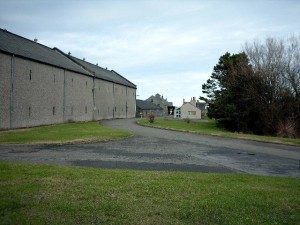When we last left Joshua and Stuart, they were knee deep the history of Glenglassaugh, obstacles in progressing sales and awareness of the brand, the many awards won for their 21, 30 & 40 year old whiskies and who was on the Glenglassaugh team and why. We now move onto other subjects such as “New Make Spirit”, “Full Cask Sales”, “Vegetarianism”, “Desert Island Drams”, “Stuarts creation of the current Highland Park 25yr expression” and “Sleeping Customs Officers, hard at work!”
If you’ve not yet read it and wish to get caught up on part 1 to this interview, click here.
Please join me in the conclusion to last weeks interview with Stuart Nickerson, Managing Director of the newly re-opened Glenglassaugh Distillery:
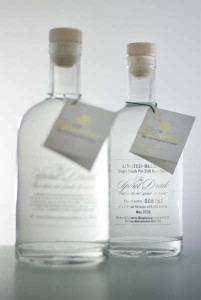 Joshua: Recently, there’s been a lot of buzz around new make spirit, white dog, moonshine… call it what you will. Without going into the arguments for or against it, what are your reasons for making your “Spirit Drink That Dare Not Speak It’s Name” new make spirit available for mass consumption?
Joshua: Recently, there’s been a lot of buzz around new make spirit, white dog, moonshine… call it what you will. Without going into the arguments for or against it, what are your reasons for making your “Spirit Drink That Dare Not Speak It’s Name” new make spirit available for mass consumption?
Stuart: We decided to make our new-make spirit available for two reasons, firstly because our distillery manager, Graham Eunson, and myself, who between us have many years experience of managing malt distilleries, thought that the new-make was outstanding and fruitier than any others that we had come across.
The second reason was that we had a number of enquiries, particularly from European consumers who were interested in trying the spirit and in some cases comparing it with mature Glenglassaugh.
We followed that product up with “The Spirit Drink that blushes to speak its name”, the result of maturing for 6 months in Californian red wine casks and this product really is different. It is red/pink in colour with lots of pear in the nose but a strawberry flavor on the palate. It has been particularly well received by mixologists with several cocktails created using it as a base.
It is the success of these products that has led to extend the range with the forthcoming release of “Peated”, new-make from peated barley and “Fledgling XB” which is normal new-make allowed to mature for 12 months in a first after bourbon cask.
We have taken on board consumer feedback and reduced bottle size to 200ml and we have also changed the names to make it easier to ask for.
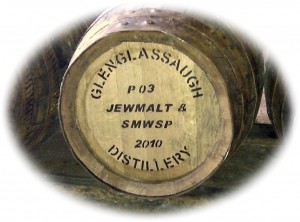 Joshua: There are a few distilleries out there that offer (at least publicly), consumers the ability to buy full casks. You offer two sizes of cask and two different spirit types (peated, at 30ppm, and non-peated, or, peated to 1ppm of peat). Can you go into the details of this program? As a slight aside, and in addition to the previous question, your pricing for this program is remarkable low. Is there a reason for this? Was it purposeful? (Dear reader, please note the Glenglassaugh Octave Cask to the right! This cask belongs to members of my society, Jason of Guid Scotch Drink‘s whisky society… even Gal of Whisky Israel has a share in this baby!)
Joshua: There are a few distilleries out there that offer (at least publicly), consumers the ability to buy full casks. You offer two sizes of cask and two different spirit types (peated, at 30ppm, and non-peated, or, peated to 1ppm of peat). Can you go into the details of this program? As a slight aside, and in addition to the previous question, your pricing for this program is remarkable low. Is there a reason for this? Was it purposeful? (Dear reader, please note the Glenglassaugh Octave Cask to the right! This cask belongs to members of my society, Jason of Guid Scotch Drink‘s whisky society… even Gal of Whisky Israel has a share in this baby!)
Stuart: We have two programmes which are different in a number of ways,
(a) The Octave programme is for individuals, whisky clubs, groups and small businesses that want to purchase a cask of whisky which is affordable, will be ready in a relatively short time period (probably around 5 years) and will produce a reasonable number of bottles but not several hundred.
For this programme we fill octave casks, which are around 50 litres with unpeated new-make spirit and the cost is £500.00 which covers all warehousing and insurance costs for up to 7 years maturation. The cost excludes bottling, shipping and duty and more details can be found on our website including an order form and fact sheet. We do have a specific fact sheet for USA customers and will happily email it to anyone who is interested in this programme.
We also fill octaves with peated new make spirit with everything being the same as above except that the cost is £600.00 per octave to reflect the higher malt price.
(b) The second programme is the 250 club membership and this is for people, groups, clubs and businesses that are wishing to buy a larger cask, similar to the ones that are now commonly used throughout the industry. This would be anything from an ex-bourbon barrel at 190 litres to an ex-sherry butt at 500 litres or ex-port pipe at around 600 litres.
Included this time is maturation and insurance for up to 10 years and also the eventual cost of bottling, consequently the cost is much higher starting at £2,500.
I don’t think that our price is any lower than others although the octave price is low at first sight but as I said theses casks are much smaller than other casks. This programme in particular is very successful and we sell much more than we originally anticipated.
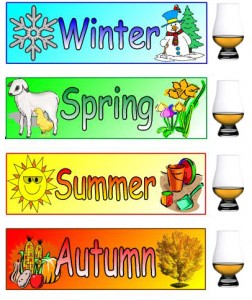 Joshua: One thing I try to focus on with my blog is what dram to drink for a particular mood or season. Will Glenglassaugh approach the release of new whisky expressions in a similar manner? Do you approach personal consumption in this manner?
Joshua: One thing I try to focus on with my blog is what dram to drink for a particular mood or season. Will Glenglassaugh approach the release of new whisky expressions in a similar manner? Do you approach personal consumption in this manner?
Stuart: Regarding Glenglassaugh we already have a range of products for consuming at different times, be that different season, time of the day or mood.
The “Clearac” spirit drink is remarkably fruity and easy drinking and can be consumed at any time while “Blushes” is great with lots of ice, cranberry juice and cream soda (tastes like strawberry ice-cream)
Our “younger” whiskies – those that are only 26 and 37 years old are very complex yet light and fruity with spices and hints of chocolate and are great before a meal or when sitting in company and chatting. I would probably describe them as spring or autumnal whiskies.
The over 40 year olds generally have a bit more sherry and are complex but with much more rich dried fruits, dark chocolate and marzipan and I would describe them as rich fruit cake. Great at the end of an evening or a winter dram.
Joshua: Stuart, you have a long history within the whisky industry. Can you go into this? From your start and up until today?
Stuart: The story really starts when I left University back in 1979 (BSc in Chemical Engineering from Heriot-Watt University in Edinburgh – seems like a lifetime ago (and is)) and started working with a company in Fife who, amongst other things manufactured by-products plants for the whisky industry. This led me to visit Convalmore distillery, Bunnahabhain Distillery, Aultmore Distillery and the Combination of Rothes Distillers (which is a large by-products plant owned by the Rothes distilleries.) So when I saw a job advertised in Dufftown with Arthur Bell & Sons then I jumped at it.
I joined Bells in 1981 as a project engineer and spent the next 3 years with them working at all of their distilleries (Dufftown, Pittyvaich, Blair Atholl, and Inchgower and Bladnoch).

In 1984 I joined Highland Distilleries as distillery manager at Highland Park Distillery and then in 1987 moved to take up the Glenrothes Distillery manager role, still with Highland, and at the same time managed Glenglassaugh which had recently closed but still had an on-site warehousing squad.
I moved to United Distillers ( a forerunner to Diageo) in 1989 and spent 15 months with them as a project manager with responsibility for malt distilleries capital investment. The time spent with them probably says something about how much I enjoyed the role there.
In 1990 the general managers role for Wm Grants at Dufftown became available which included managing Glenfiddich, Balvenie and Kininvie and that was my next move. I then spent the next 14 years with Grants, moving to Girvan in 1985 to become general manager of Girvan grain distillery and in 1986 I became Distilleries Director for the group with overall responsibility for all of their distilleries.
I left them at the end of 2004 to start my own consultancy as I had always wanted to run my own business and with my children having left home it seemed the perfect opportunity. In 2006 a new client asked me to carry out on a potential distillery purchase and this chance encounter eventually led to the purchase of Glenglassaugh and my moving into this role.
Joshua: How did you get into whiskies? Did you have a gateway whisky? Do you have a story that goes with it?
Stuart: My first experience of whisky was as a young teenager when one of my parents friends stuck a glass in my hand, just before “the bells” on hogmanay and explained that I need a whisky to “see-in the new year” correctly. To be honest it tasted awful and I thought that I would not want to repeat the exercise – ever.
I think that my real introduction was probably through my father who was a lover of Glenfiddich and so I got into malts pretty quickly and even though I appreciate a good blend, and there are plenty around, I have always been more of a single malt man.
 Joshua: Stuart, you and I share something, which, I think, is somewhat unique to those involved (in any way) to the whisky industry. You are a vegetarian. So am I. What are your reasons for this and how do you find people react to this news when they first here about it?
Joshua: Stuart, you and I share something, which, I think, is somewhat unique to those involved (in any way) to the whisky industry. You are a vegetarian. So am I. What are your reasons for this and how do you find people react to this news when they first here about it?
Stuart: My reasons were mixed, partly because I didn’t like red meat and found it easier at functions to ask for the vegetarian option, partly because I am against intensive farming of animals, and partly because of health benefits in that I feel much healthier that I did when I ate meat.
The reaction is mixed in that some people readily accept it, others are very surprised and want know why I became one and how I can possibly survive as a vegetarian. A few treat it almost as a disease and go to extraordinary lengths to explain to a waiter that their friend is this strange creature called a vegetarian who will need careful treatment and should probably be examined in case he turns into a mad ax-man (OK slightly joking there). Finally there are those that want to know a lot more as they are genuinely interested and eat less meat anyway but have not taken the step to try being totally vegetarian.
Generally there has been much more acceptance of vegetarians over the last few years and I normally don’t have too much of a problem finding something to eat when I am out.
Joshua: What passions, other than whisk(e)y, do you have?
Stuart: I enjoy trying to keep fit, although I don’t seem to have the time that I had before for exercise, but I do enjoy running and more recently walking.
I have always enjoyed sport, only as a spectator these days, and the one that I enjoy most is ice-hockey so I have a subscription to ESPN America just so that I can watch it. I also enjoy football and rugby.
Reading any sort of fiction, especially if it relates to Scotland and lots of different types of music completes the list
Finally the most enjoyable thing is just living and making the most of each day.
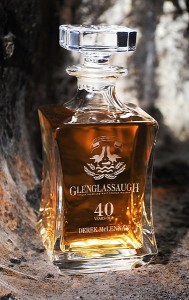 Joshua: Do you have a list of Top Drams or perhaps some Desert Island Drams you’d like to share?
Joshua: Do you have a list of Top Drams or perhaps some Desert Island Drams you’d like to share?
Stuart: Having worked in a number of distilleries then I do have a soft spot for all of them, particularly Highland Park which was the first distillery that I managed and also Glenfiddich where I had a lot of input over the years in the changes that occurred and I believe which improved the bottled product.
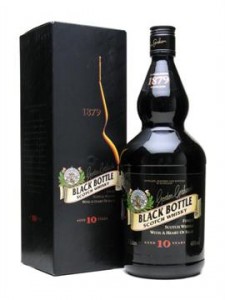 I do like a whisky which is full of flavour and which is complex and I also like some peat so for me I would want to wait for around 10 years until some of the peated Glenglassaugh is available and from possibly a Sherry cask.
I do like a whisky which is full of flavour and which is complex and I also like some peat so for me I would want to wait for around 10 years until some of the peated Glenglassaugh is available and from possibly a Sherry cask.
Of the offerings which around today, then I would chose a 10 year old Black Bottle Blend, the 25 year old 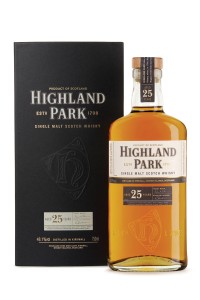 Highland Park (probably because I made it), Laphroaig Quarter Cask (which I tasted for the first time about a fortnight ago), an old Banff which I also tasted recently and of course top of the list a Glenglassaugh.
Highland Park (probably because I made it), Laphroaig Quarter Cask (which I tasted for the first time about a fortnight ago), an old Banff which I also tasted recently and of course top of the list a Glenglassaugh.
We have just chosen the next 40 year old cask which will probably be released just before Christmas and it is absolutely stunning, a real rich fruit cake nose and taste.
Joshua: Without giving out names & places (basically, without getting yourself into any trouble), do you have any funny, interesting or bizarre stories from any of your events/travels that you wish to share?
Stuart: Well it was always interesting in the early 1980’s to watch the brewer and the excise officer going into the warehouses at Dufftown on a Sunday morning. No reason given but we all reckoned that there was some illicit sampling going on there.
Just before I started at Highland Park there was an incident when the two operators who were on night shift decided to visit the local farmers fields and help themselves to some cabbages. Unfortunately they were caught by the local police and ended up staying in jail overnight and the stills were still running. No damage to the spirit or plant and no arrests but plenty of red faces.
There was the time in 1980 when I hadn’t joined the industry but was helping to commission a by-products plant in Rothes and I was on the night shift. A new operator came on and offered me some lemonade from his bottle. As I was working in a hot environment and so was extremely thirsty I gulped down as much as I could – it proved to be an interesting introduction to full strength new make spirit illicitly obtained from Glen Grant!
 In Barbados when I was visiting a rum distillery I managed to take a photograph of a customs officer who had fallen asleep in the filling store.
In Barbados when I was visiting a rum distillery I managed to take a photograph of a customs officer who had fallen asleep in the filling store.
There was an incident in Islay in the 1980’s when a distillery manager thought that something suspicious was taking place overnight and so locked his brewer into a cupboard in the operators rest room so that he could spy on the men.
Joshua: Lastly, if you had a message or lesson to give people who are just getting into whiskies, what would that be?
Stuart: Well I suppose there are a number of messages that I would suggest;
- Try a number of whiskies before you decide what you prefer as there is so much diversity
- listen to what whisky writers/tasters say but make up your own mind as each person’s taste is different
- Drink whisky the way that you like it and not as others tell you that it should be drunk
- Keep trying different whiskies, talking to different people, reading about the subject and visiting events – it is a great industry with lots of helpful people who are only too happy to pass on their thoughts
- Finally, keep an open mind and try to enjoy every dram but don’t criticise the ones that you don’t like, because someone else probably does like them!
Slange
Stuart
If you’ve not yet read it and wish to get caught up on part 1 to this interview, click here.
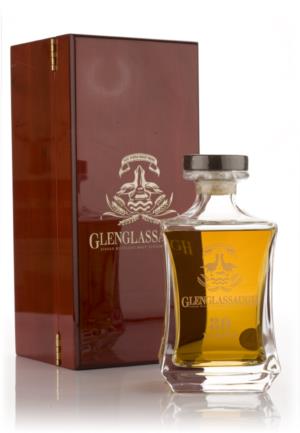 Speyside region – 55.1%ABV – 70cl Decanter (yes folks, a decanter.) – £390 | €469
Speyside region – 55.1%ABV – 70cl Decanter (yes folks, a decanter.) – £390 | €469 On the nose – Light & fruity nose filled with a mist of lemons (better yet, Etrog) and white pepper.
On the nose – Light & fruity nose filled with a mist of lemons (better yet, Etrog) and white pepper.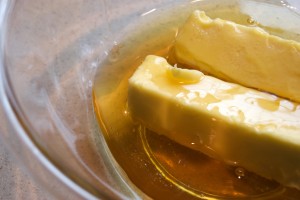
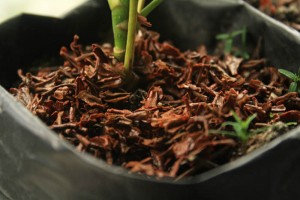 On the mouth – Fruity – Apples and berries.
On the mouth – Fruity – Apples and berries.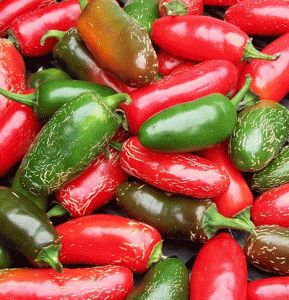 This is getting hotter by the second — cayenne and jalepeno notes pop in right as it heats up – brilliant.
This is getting hotter by the second — cayenne and jalepeno notes pop in right as it heats up – brilliant. Finish – Prickly pears both in taste and feel “prickly” tongue and cheeks.
Finish – Prickly pears both in taste and feel “prickly” tongue and cheeks.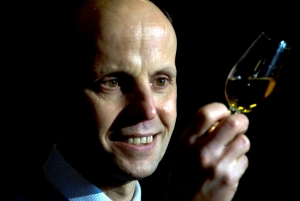 Last month I had the good opportunity to interview Stuart Nickerson (Managing Director of the newly re-opened Glenglassaugh distillery). If you’ve not yet had a chance to read it, you may want to do so right now. Part 1 & Part 2
Last month I had the good opportunity to interview Stuart Nickerson (Managing Director of the newly re-opened Glenglassaugh distillery). If you’ve not yet had a chance to read it, you may want to do so right now. Part 1 & Part 2











